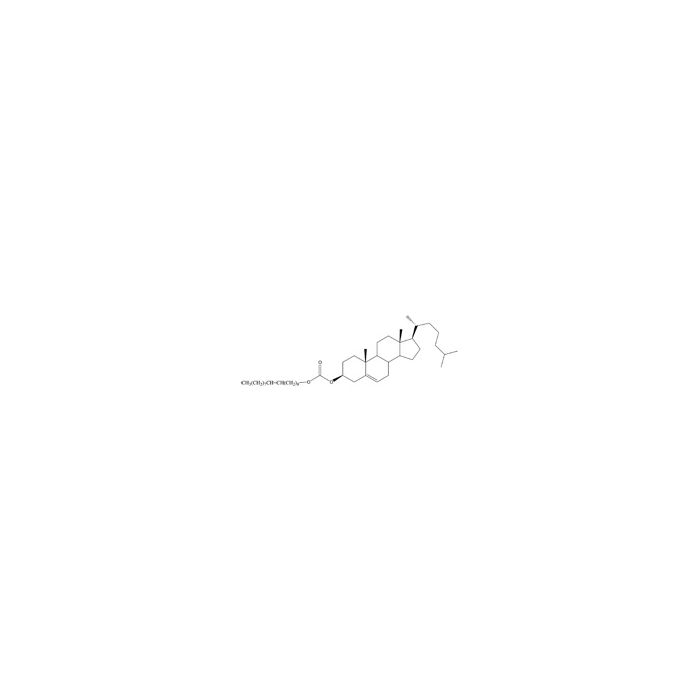Cholesteryl Oleyl Carbonate
(3-cholestene-3β-ol oleyl carbonate)
Liquid crystals are organic compounds that are capable of responding to small amounts of radiant energy and will undergo a phase transition with selective reflection of light. Specific colors are obtained depending on the wavelength of light which is determined by the organic crystal array “pitch length.” The “pitch length” will vary considerably depending on temperature and the reflected light will also therefore depend on temperature.
The key property of liquid crystals that differentiates them from liquids is the low degree of order that exists in liquid crystal molecules. This order destroys the isotropy (all directions in a liquid are equivalent) and products anisotropy (all directions in liquid state not equivalent). The anisotopy in turn results in differences in electrical, magnetic and optical properties.
Where it is desirable to obtain thermal sensitivity over a broad range, multiple crystal types may be combined to expand the range.
Liquid Crystal Applications:
- Thermally Activated Displays
- Sensors and Detection Devices
- Cosmetics
Transition temperature:
- Crystal - isotropic state at 20°C
- On cholesteric - isotropic at 40°C
- Normally in smectic phase but will slowly crystallize to a solid
Synonoyms: OCC
Unknown

